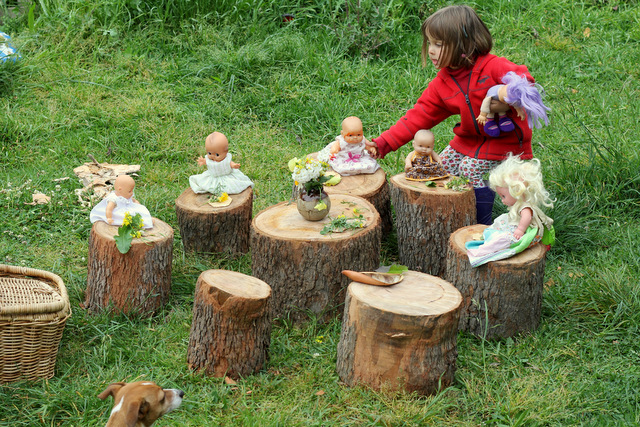Lesson 10: Nature-Based Play - Observation, Lesson Plan, and Intervention

Learning Outcomes
Upon completion of this lesson's material, students will be able
- Complete the use of the running record observation technique
- Use the running record to inform lesson planning
- Implement lesson plan that was created based on running record findings
- Reflect up on observation as a technique to gather data and improve practice
- Explain the importance of nature based play
Teaching
For years now, outside play for children has become a break for early childhood educators. I get it, it's tiring being inside with those kiddos all day constantly putting out fires, herding them through one transition after another, facilitating meaningful social experiences and scaffolding their development through intentional activities.
But consider this.....
- Children who play outside are sick less often - ESPECIALLY IN WINTER!
- Children who play outside are less likely to be overweight - A GROWING ISSUE IN THE U.S.!
- Children who play outside are more imaginative and creative. They also show improved language, problem solving skills and social-emotional growth.
- Children who play outside and take risks are able to better understand their surroundings, build confidence and competence!
- Chidlren who play outside are lower stress levels and more positive behaviors.
- Children with an ADHD, ADD and other diagnosis show less symptoms after playing in nature!
- AND THE LIST GOES ON!
For a comprehensive list of research articles and benefits take a look at the Children & Nature Network studies.
I know I know.... they are going to get dirty or maybe they will get hurt. AAAAHHHH. We could list a million barriers to bringing children outside but they are all excuses. Consider the reasons why you don't want to bring them outside. Is it a personal belief? Is there research to back it up? Are the children really benefiting to staying inside instead?
CLICK HERE TO VIEW AN INFOGRAPHIC ON OVERCOMING BARRIERS TO OUTSIDE PLAY
I challenge you to choose your barrier and look through the Children & Nature Network studies to help de-bunk your thoughts and barriers.
Assessment
These Lesson Plans are "Universal" in that they are used for both our face-to-face and Online course offerings. The instructions for the "Discussions" found in this section are for the Online classes only unless otherwise indicated by your Instructor.
Lesson 10 Assignment
Observation and Planning
You will be using the Anecdotal Form (pdf) (.doc) and Lesson Plan Form (pdf) (in .docx) for this assignment. Check your Lesson Plan Rubric if you need further guidance
A key component to your Practicum experience is to engage in the process of observing, planning, implementing and reflecting on lessons.
Below you will find instructions on each step of this process. During the First part of this assignment you will first, complete an observation. At the end of the observation in the space provided you will reflect upon your observation using the prompts below. You will then use this observation process to create a lesson plan. You will be using specific forms that we have created to do this.
- Observation
- Using the anecdotal form provided, observe children for 20 minutes who are engaged in a free play.
- In the comments section of the anecdotal recording form, jot down specific examples of what you are observing.
- From your observation, what do you think the children are interested in or could use more support in?
- What activity will you create to support that interest or skill you observed?
- Planning
- Create a lesson plan using the lesson plan format provided
- Assure that the lesson plan is derived from the observation.
- Check with your cooperating teacher and/or instructor to see if it is a good fit for your placement and determine that the plan is 1) age appropriate and 2) ties-in, or coincides with the current curriculum.
Lesson 10 Discussion A
The link: Nature-Based Learning and Development will bring you to a webpage where there are two video links near the bottom of the page. Click on the one that says, "Nature Based Learning and Development for teachers.
Planning for nature based education makes a big difference for young children! What is one way you can incoroporate nature based education into your classroom and what developmental domains would you be supporting?
Lesson 10 Discussion B
Read the following articles:
Benefits of Connecting Children with Nature
Which positive impact are you most suprised by and why?
Lesson 10 Discussion C
Read chapter 10 in Swinging Pendulums (pgs 42-46). Do the staff memebers at your site agree about what is safe for children and what poses a risk? Explain - Is a difference in opinion okay with this topic?